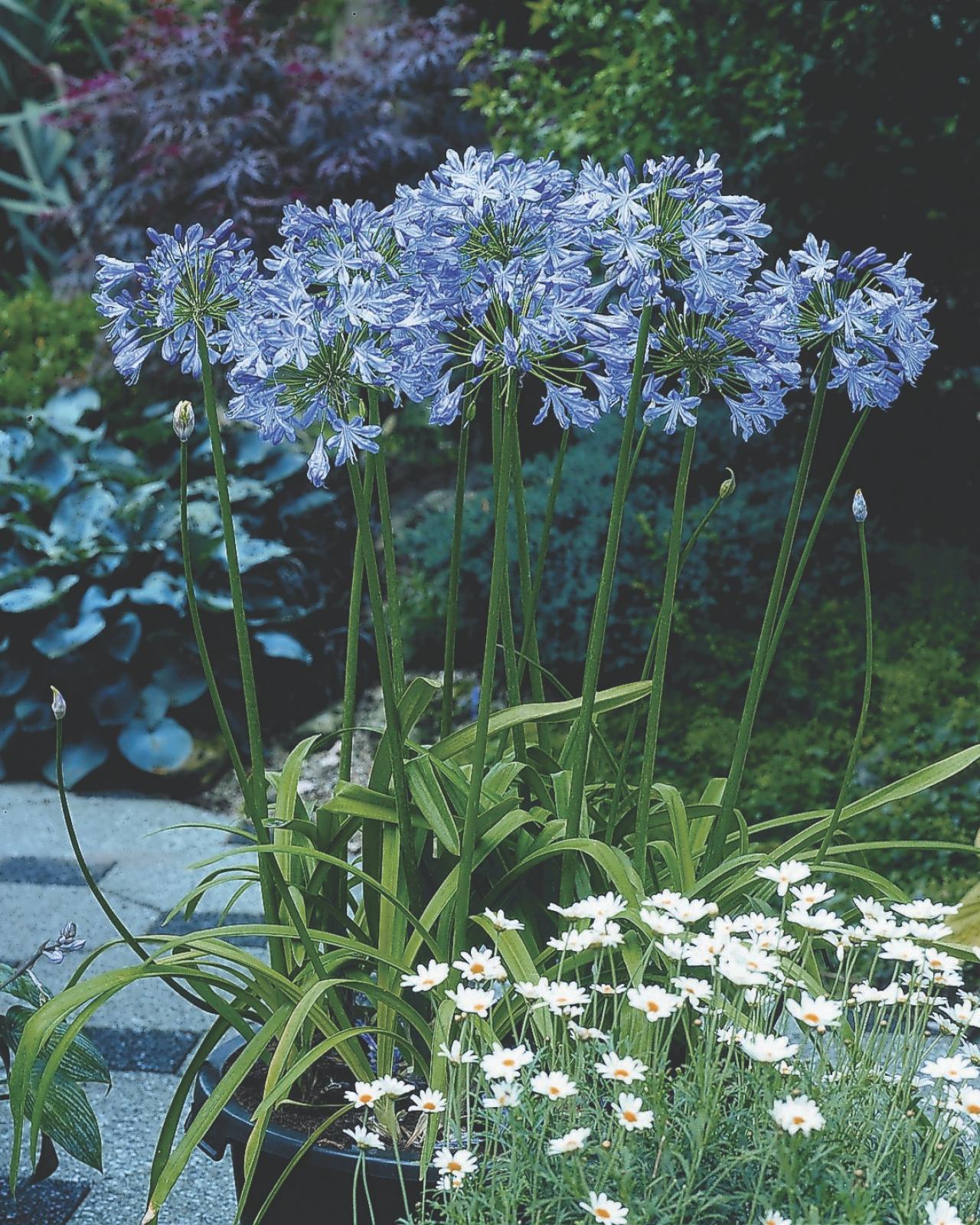Seasonal Agapanthus Care: Preparing for Winter Months and Summer season
Wiki Article
Grasping the Art of Agapanthus Care: Vital Steps for Healthy And Balanced Growth and Dynamic Blooms
In the world of horticulture, the farming of agapanthus stands as a rewarding endeavor for those who seek to nurture these elegant blooming plants. With their striking blooms and elegant vegetation, agapanthus has recorded the focus of garden enthusiasts worldwide. Nonetheless, accomplishing optimal development and dynamic blossoms calls for a nuanced technique that encompasses numerous crucial steps. From selecting the appropriate range to mastering trimming techniques, the journey in the direction of cultivating growing agapanthus plants is complex and holds the key to opening the complete possibility of these herb gems.
Selecting the Right Agapanthus Variety

When choosing the right Agapanthus selection for your garden, think about aspects such as climate viability, bloom shade, and growth habit. In addition, think about the climate in your area to ensure the Agapanthus selection you choose can grow in your specific problems. Comprehending the development habit of various Agapanthus varieties is critical for proper positioning within your garden.
Ideal Growing Conditions
Considering the ideal environmental demands is essential for successful Agapanthus growing. Agapanthus plants are sensitive to cold temperatures and must be shielded from frost throughout winter months.To guarantee healthy and balanced development and vibrant flowers, plant Agapanthus light bulbs at a deepness of about 2-4 inches and room them 8-12 inches apart. Including raw material, such as compost, to the soil can enhance drain and fertility, promoting durable origin growth. Mulching around the base of the plants aids preserve moisture and subdues weed development. Regular watering is essential, specifically throughout the expanding season, to keep the soil regularly wet but not soaked.
Watering and Fertilizing Tips
Preserving correct wetness levels and providing vital nutrients are vital aspects in the treatment regimen for Agapanthus plants. When it comes to sprinkling Agapanthus, it is critical to strike a balance. These plants prefer continually damp soil yet are prone to root rot if overwatered.Feeding Agapanthus is vital for promoting healthy development and prolific blooms. Use recommended you read a well balanced plant food, such as a 10-10-10 formula, in the early spring as brand-new growth emerges. By following these watering and feeding suggestions, you can ensure your Agapanthus plants prosper and create dynamic, lasting flowers.
Trimming Strategies for Agapanthus
Trimming Agapanthus plants at the suitable times and with proper strategies is critical for preserving their health and wellness and advertising optimal growth and flowering. The perfect time to trim Agapanthus is in late winter months Discover More Here or very early springtime prior to new growth arises. Begin by eliminating any type of dead or yellowing fallen leaves near the base of the plant. Cut them as short as feasible without damaging the emerging shoots.Deadheading invested flowers can likewise reroute the plant's power into generating even more blossoms rather than establishing seeds. If you want to gather seeds for breeding, leave some flowers to mature and completely dry on the plant.
Remember to utilize tidy, sharp tools to make specific cuts and minimize the threat of presenting diseases. Agapanthus. Regular pruning will certainly aid maintain your Agapanthus looking healthy and neat while ensuring an abundant screen of lovely blossoms
Handling Typical Parasites and Diseases
After making certain appropriate trimming methods for Agapanthus, it is vital to resolve typical bugs and diseases that can affect the health and vigor of these plants. One usual parasite that affects Agapanthus is the Agapanthus gall midget.Another usual issue is fungal leaf area, which offers as go to the website dark lesions on the leaves. To protect against fungal diseases, guarantee excellent air blood circulation around the plants, avoid overhanging watering, and remove any infected fallen leaves without delay. Additionally, Agapanthus plants can struggle with origin rot if they are grown in inadequately draining pipes dirt. To stop this, plant Agapanthus in well-draining dirt and prevent overwatering. By being watchful and taking prompt action versus diseases and insects, you can assist your Agapanthus plants prosper and produce vibrant blooms.

Conclusion
Finally, understanding the art of agapanthus treatment includes choosing the best selection, supplying suitable planting conditions, correct watering and fertilizing, suitable pruning strategies, and attending to typical pests and illness. By complying with these important steps, you can ensure healthy and balanced growth and vibrant blossoms for your agapanthus plants. Keep in mind to frequently monitor and preserve your plants to advertise their total health and durability.To ensure healthy growth and dynamic blooms, plant Agapanthus light bulbs at a depth of concerning 2-4 inches and area them 8-12 inches apart. By adhering to these watering and feeding ideas, you can ensure your Agapanthus plants grow and produce dynamic, durable flowers.
One common bug that impacts Agapanthus is the Agapanthus gall midget. Furthermore, Agapanthus plants can experience from root rot if they are grown in inadequately draining dirt. By following these essential actions, you can ensure healthy and balanced growth and lively flowers for your agapanthus plants.
Report this wiki page